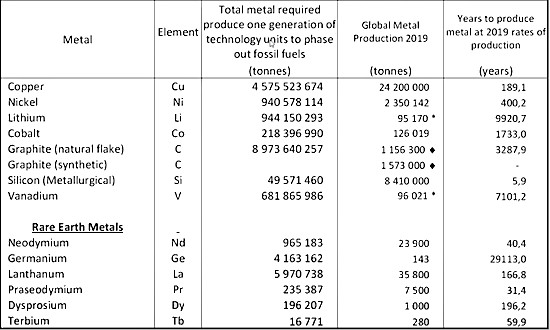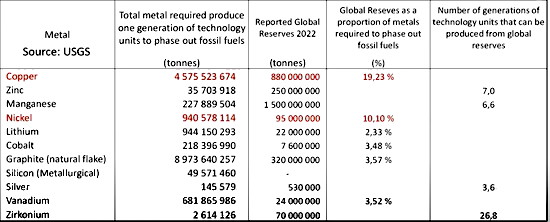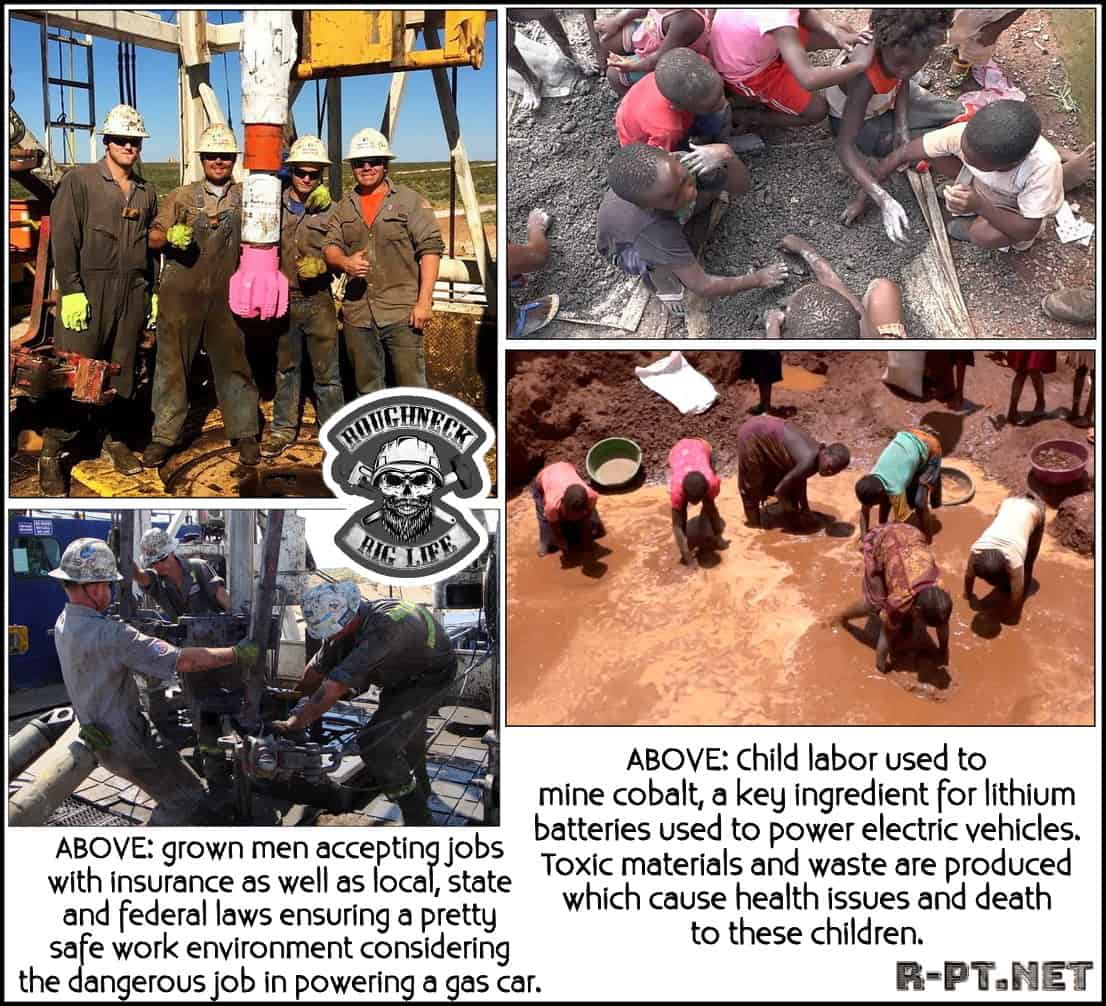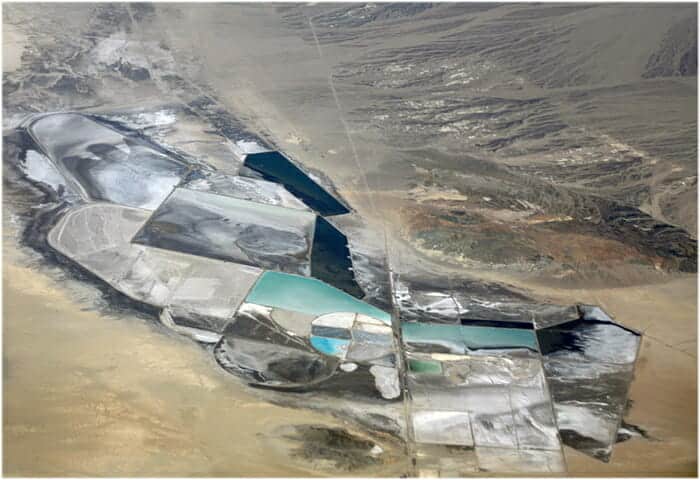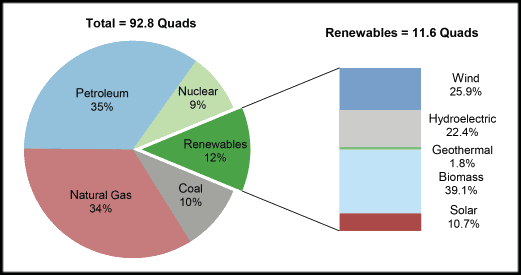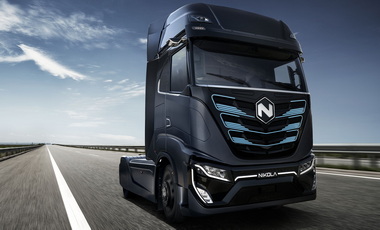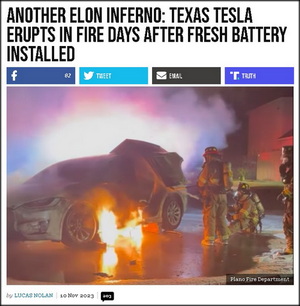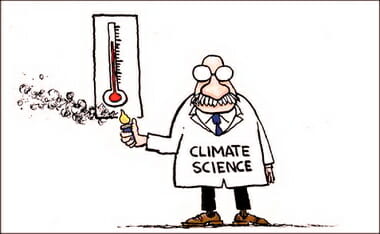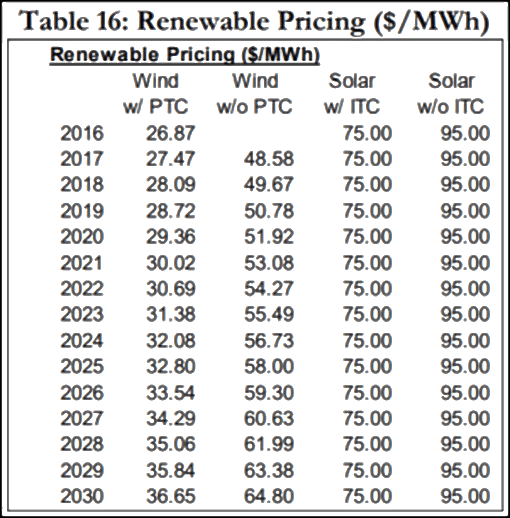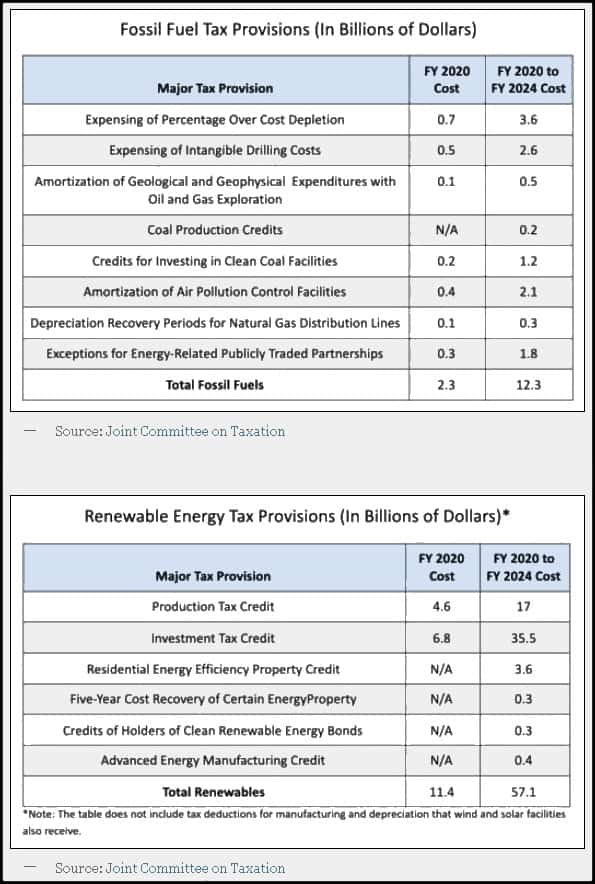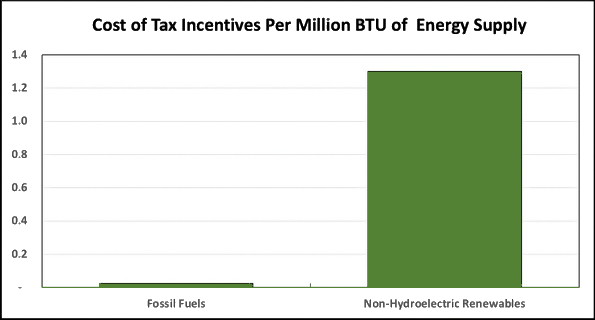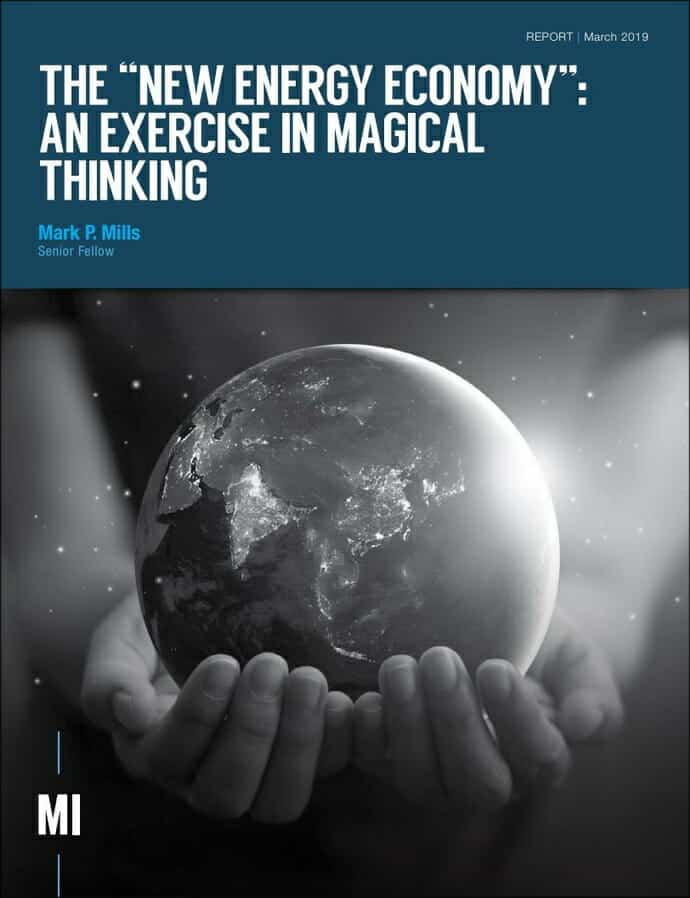Here is a 2014 Google FLASHBACK where sanity prevailed a bit — note, I will end with it as well:
We came to the conclusion that even if Google and others had led the way toward a wholesale adoption of renewable energy, that switch would not have resulted in significant reductions of carbon dioxide emissions. Trying to combat climate change exclusively with today’s renewable energy technologies simply won’t work; we need a fundamentally different approach.
[….]
“Even if one were to electrify all of transport, industry, heating and so on, so much renewable generation and balancing/storage equipment would be needed to power it that astronomical new requirements for steel, concrete, copper, glass, carbon fibre, neodymium, shipping and haulage etc etc would appear. All these things are made using mammoth amounts of energy: far from achieving massive energy savings, which most plans for a renewables future rely on implicitly, we would wind up needing far more energy, which would mean even more vast renewables farms – and even more materials and energy to make and maintain them and so on. The scale of the building would be like nothing ever attempted by the human race.”
Google Joins the Common Sense Crew On Renewable Energies – Finally! (RPT)
POWERLINE!
I will add an older post below this excellent POWERLINE blogpost:
Liberals tell us that we are in the midst of a transition from fossil fuels to wind and solar energy. The reality is that no such transition is taking place, nor will it. This video by Professor Simon Michaux, who doesn’t take issue with global warming hype, explains one of several reasons why this is true: the mineral requirements of a wind- and solar-based energy system can’t possibly be met.
This description accompanies the YouTube video:
The quantity of metal required to make just one generation of renewable tech units to replace fossil fuels, is much larger than first thought. Current mining production of these metals is not even close to meeting demand. Current reported mineral reserves are also not enough in size. Most concerning is copper as one of the flagged shortfalls.
Before the video, here are a few screenshots from it. This one shows the principal metals needed for a wind and solar energy system, and compares those requirements with actual production of those commodities as of 2019, the last “normal” pre-covid year. Note that 189 years worth of copper production, 400 years of nickel production, 9,921 years of lithium production, 1,733 years of cobalt production, 29,113 years of germanium production, and so on, would be needed for the first 20 years of wind and solar installations. Then we would have to do it all over again. Talk about a lack of sustainability!
This chart looks at known global reserves of key minerals, as a percentage of what would be needed to replace fossil fuels. Note, for example, that known lithium reserves amount to less than 3% of what would be needed to replace fossil fuels with wind, solar and batteries, for the first 20 years. Known cobalt reserves amount to less than 4% of what would be needed for the first generation, and so on. Keep in mind, too, that mining projects typically take something like 20 years to come on line. Longer, if the environmentalists get their way.
[….]
Another point that is often overlooked is that mining companies exploit the lowest-cost minerals first–those that are most plentiful and easiest to extract. If demand increases exponentially, then much more expensive sources will be brought into play. This means that the cost of basic minerals like copper, nickel, cobalt and so on will skyrocket as demand increases, perhaps by orders of magnitude. I don’t think anyone has even attempted to assess the full cost of a “green” energy system when those price increases are taken into account.
HERE IS MY RECENT ELECTRIC VEHICLE UPDATE
BATTERIES
In an excellent post linking to a German documentary (30-minutes) and study showing the devastation to Chili of lithium mining, we find the following:
German ZDF public television recently broadcast a report showing how electric cars are a far cry from being what they are all cracked up to be by green activists.
The report titled: “Batteries in twilight – The dark side of e-mobility” [now not available] shows how the mining of raw materials needed for producing the massive automobile batteries is highly destructive to the environment. For example, two thirds of the cobalt currently comes from the Congo, where the mining rights have been acquired by China. Other materials needed include manganese, lithium and graphite.
Every electric car battery needs about 20 – 30 kg of lithium.
The mining of the raw materials often takes place in third world countries where workers are forced to work under horrendous conditions and no regard is given to protecting the environment. When it comes to “going green”, it seems everything flies out the window….
- The production of lithium through evaporation ponds uses a lot of water – around 21 million litres per day. Approximately 2.2 million litres of water is needed to produce one ton of lithium. (EURO NEWS)
AGAIN… here is a Facebook post of the same thing regarding Lithium Fields:
This is a Lithium leach field.
This is what your Electric Car batteries are made of.
It is so neuro-toxic that a bird landing on this stuff dies in minutes.
Take a guess what it does to your nervous system?
Pat yourself on the back for saving the environment.
Chile, 2nd largest lithium producer, is having water-scarcity problems as this technology takes so much water to produce battery-grade lithium. 2000 tons: 1 ton.
And the current version of the “inflation reduction act” wants 100% of EV battery components produced in the US.
Lead, nickel, lithium, cadmium, alkaline, mercury and nickel metal hydride.
Batteries are a collection of things that are extremely deadly.
Alternative fuels/energy is a DIRTY BUSINESS… but the left who live in the seclusion of the New York Times and MSNBC would never know this. I can show a graph showing skyrocketing carbon emissions worldwide for the past decade and that the temperature has dropped during this time by a small amount, and it is like showing them instructions to build an IKEA bookcase with instructions written in Gaelic!
“Giga Factories” vs. Fossil Fuels | Mark Mills
Our nations Utility batteries and car batteries can only store two hours worth of our nations electricity needs. We have an estimated 1 million electric cars in use in the United States. But what goes into building an electric vehicle. How much fossil fuel is needed, and how much environmental damage is done, extracting the rare earth minerals needed to power an electric vehicle? The answer will surprise you. And prove the Electric car is not the savior for our energy woes.
What about the impact and supply of the materials needed to produce batteries? TreeHugger has a good post that mentions some of these environmental pitfalls. These issues involve many devices we use daily (cell phones, lap-top computers, rechargeable batteries, etc.), but add to this burden a mandated or subsidized car industry:
…lithium batteries take a tremendous amount of copper and aluminum to work properly. These metals are needed for the production of the anode & the cathode, cables and battery management systems. Copper and aluminum have to be mined, processes and manufacturing which takes lots of energy, chemicals and water which add to their environmental burden.
[….]
First of all, this study emphasizes that there would be less Lithium available than previously estimated for the global electric car market. It also states the fact that some of the largest concentrations of Lithium in the world are found in some of the most beautiful and ecologically fragile places, such as The Salar de Uyuni in Bolivia. The authors note:
“It would be irresponsible to despoil these regions for a material which can only ever be produced in sufficient quantities to serve a niche market of luxury vehicles for the top end of the market. We live in an age of Environmental Responsibility where the folly of the last two hundred years of despoilment of the Earth’s resources are clear to see. We cannot have “Green Cars” that have been produced at the expense of some of the world’s last unspoiled and irreplaceable wilderness. We have a responsibility to rectify our errors and not fall into the same traps as in the past.”
[….]
The report estimates that there would be less Lithium available than previously estimated for the global electric car market, as demand is rising for competing markets, such as cellular telephones and other electronic devices. At the same time, due to a great concentration of Lithium found in Chile, Bolivia and Argentina (70% of the world’s deposits), the United States and other developed countries needing the material will be subject to geopolitical forces similar to those they have already encountered from the member countries of OPEC…
Click HERE to go to larger file (use mouse wheel to zoom in)

In an excellent article we see the projected demands on other metals involved in the battery and transit goals:
….Regarding the demand for the different minerals, in the case of aluminum, according to our results, the demand for minerals from the rest of the economy would stand out, with the requirement for batteries having little influence. Copper would have a high demand from the rest of the economy, but it would also have a significant demand from vehicles, infrastructure and batteries. Cobalt would be in high demand because of the manufacture of batteries with the exception of the LFP battery that does not have this mineral, in the case of its demand from the rest of the economy it can be stated that it would be important but less influential than the demand for batteries. Lithium would have very high requirements from all the batteries and with a reduced demand from the rest of the economy. Manganese would have an important but contained demand coming from LMO and NMC batteries, since the requirements for this mineral would stand out in the rest of the economy. Finally, nickel would have a high demand from NMC and NCA batteries, but its main demand would come from the rest of the economy.
The batteries that would require the least materials are the NCA and LFP batteries. The NMC battery has been surpassed in performance and mineral usage by the NCA. The LiMnO2 battery has a very poor performance, so it has been doomed to disuse in electric vehicles. In addition, the LFP battery, the only one that does not use critical materials in the cathode (other than lithium), also has poor performance, requiring very large batteries (in size and weight) to match the capacity and power of batteries using cobalt.
Charging infrastructure, rail and copper used in electrified vehicles could add up to more than 17% of the copper reserve requirement in the most unfavourable scenario (high EV) and 7% in the most favourable (degrowth), so these are elements that must be taken into account…..
(GEEDS)
Half of all Cobalt made goes into electric cars.
Are Electric Vehicles really clean? | They run on dirty energy and blood of children as young as 6. | Electric cars drive human rights abuse and child labour. | China is one of the villains in this story. | Are electric carmakers equally guilty too? | Palki Sharma Upadhyay tells you.
TO MAKE MATTERS WORSE….
…. lithium is also not the only battery ingredient with a dark side. Perhaps the darkest of all is cobalt, which is commonly used, alongside lithium, in the batteries of many electric vehicles.
More than half of the world’s cobalt is mined in the Democratic Republic of the Congo (DRC). According to a 2016 Amnesty International Report, 20% of the cobalt exported from the DRC comes from artisanal mines, in which miners use either their hands or very basic tools to dig out rocks from tunnels deep underground, often for as little as $2 a day.
Worse still, UNICEF estimates 40,000 of the workers in these mines are children under the age of 18, with some as young as 7 years old. Cobalt mining also comes with serious health risks. Chronic exposure to dust containing cobalt can cause the potentially fatal lung disease “hard metal lung disease.” Many fatal accidents have also been caused by mines not being constructed or managed safely.
Clearly then, in the face of such widespread environmental damage and human rights abuses, the ethics of electric vehicles is far more complicated than the expensive car adverts and glowing newspaper headlines would have us believe…..
(VARSITY)
Materials for One EV Battery:
THIS COULD BE UNDER “LAND NEEDED”
- You Dig Up 500,000 Pounds of the Earth’s Crust for One EV Auto Battery! And each of these half a million pounds of earth are dug up with a diesel engine. A typical EV battery weighs one thousand pounds, about the size of a travel trunk. It contains twenty-five pounds of lithium, sixty pounds of nickel, 44 pounds of manganese, 30 pounds cobalt, 200 pounds of copper, and 400 pounds of aluminum, steel, and plastic. Inside are over 6,000 individual lithium-ion cells. To manufacture each EV auto battery, you must process 25,000 pounds of brine for the lithium, 30,000 pounds of ore for the cobalt, 5,000 pounds of ore for the nickel, and 25,000 pounds of ore for copper. All told, you dig up 500,000 pounds of the earth’s crust for one battery.” (NATIONAL REVIEW – AUSTRALIA)
LAND NEEDED
- “the plausible path to decarbonization, modeled by researchers at Princeton, sees wind and solar using up to 590,000 square kilometers — which is roughly equal to the land mass of Connecticut, Illinois, Indiana, Kentucky, Massachusetts, Ohio, Rhode Island and Tennessee put together. The footprint is big.” — Ezra Klein in the New York Times.
Why were federal tax subsidies extended for wind and solar by Congress? Again. For the umpteenth time! We are against subsidies because they distort markets. Those politicians who support these market-distorting policies should at least be forced to answer the question: “How much is enough?” Taxpayers have been subsidizing wind and solar corporations for more than 40 years! These companies have gotten fat and happy on your money, and Congress keeps giving them more of it. This video is based on a Texas Public Policy Foundation report that explains why it’s long past time to stop wind and solar from stuffing their bank accounts with your tax dollars.
- To give you a sense of scale, to replace the energy from one average natural gas well, which sits on about four acres of land, would require 2,500 acres of wind turbines. That is a massive amount of land. You would have to cover this entire nation with wind turbines in an attempt to replace the electricity that we generate from coal, natural gas, and nuclear power, and even that would not get the job done. (CFACT)
This is from a recent BLOOMBERG article:
At his international climate summit in April, President Joe Biden vowed to cut U.S. greenhouse gas emissions in half by 2030. The goal will require sweeping changes in the power generation, transportation and manufacturing sectors. It will also require a lot of land.
Wind farms, solar installations and other forms of clean power tend to take up more space on a per-watt basis than their fossil-fuel-burning brethren. A 200-megawatt wind farm, for instance, might require spreading turbines over 13 square miles (36 square kilometres). A natural-gas power plant with that same generating capacity could fit onto a single city block.
Achieving Biden’s goal will require aggressively building more wind and solar farms, in many cases combined with giant batteries. To fulfill his vision of an emission-free grid by 2035, the U.S. needs to increase its carbon-free capacity by at least 150%. Expanding wind and solar by 10% annually until 2030 would require a chunk of land equal to the state of South Dakota, according to Princeton University estimates and an analysis by Bloomberg News. By 2050, when Biden wants the entire economy to be carbon free, the U.S. would need up to four additional South Dakotas to develop enough clean power to run all the electric vehicles, factories and more.
WRECKING OUR PLANET TO SAVE IT
Earth Day 2021 is April 22nd. Therefore, eco-activist groups will be preaching the gospel of wind & solar power and the importance of biodiversity. What those trying to “save the planet” fail to understand (or more likely ignore) is that these two priorities are in direct conflict. Wind & solar require far more land than nuclear, natural gas and coal power. They are also far more destructive to regions of high biodiversity as well as large birds, bats and endangered species. As we celebrate Earth Day, let’s consider the significant environmental consequences of attempting to provide electricity through low density, unreliable sunshine and breezes.
Vice President Joe Biden aims to be the most progressive president on the issue of climate change. The man who spent most of 2020 hiding in the basement believes the future of energy is renewable energy like wind and solar. Biden should go back to the basement, watch Michael Moore’s “Planet of the Humans,” and rethink his advocacy for renewable energy. Wind and solar are not the answer, and the idea of converting our fossil fuel-based economy into renewables could be a devastating take-down to society.
- What It Would Really Take to Reverse Climate Change: Today’s renewable energy technologies won’t save us. So what will? (SPETRUM)
- Shocker: Top Google Engineers Say Renewable Energy ‘Simply won’t work’ (WATTS UP WITH THAT)
- Polluting the Beauty and Cleanliness Of Our World With Renewable Energy (RPT)
- Wind and Solar More Harmful To Environment Than Helpful (RPT)
FLASHBACK
- What It Would Really Take to Reverse Climate Change: Today’s renewable energy technologies won’t save us. So what will? (SPETRUM)
- Shocker: Top Google Engineers Say Renewable Energy ‘Simply won’t work’ (WATTS UP WITH THAT)
- Polluting the Beauty and Cleanliness Of Our World With Renewable Energy (RPT)
- Wind and Solar More Harmful To Environment Than Helpful (RPT)
So it seems that these more left leaning environmentalists think it is okay to spend billions of tax-payer money and regulate businesses on ideas that do not work anywhere but in Utopian dreams. Let’s end with WUWT quoting these Google Ph.D.s and then segue out with commentary:
“Even if one were to electrify all of transport, industry, heating and so on, so much renewable generation and balancing/storage equipment would be needed to power it that astronomical new requirements for steel, concrete, copper, glass, carbon fibre, neodymium, shipping and haulage etc etc would appear. All these things are made using mammoth amounts of energy: far from achieving massive energy savings, which most plans for a renewables future rely on implicitly, we would wind up needing far more energy, which would mean even more vast renewables farms – and even more materials and energy to make and maintain them and so on. The scale of the building would be like nothing ever attempted by the human race.”
I must say I’m personally surprised at the conclusion of this study. I genuinely thought that we were maybe a few solar innovations and battery technology breakthroughs away from truly viable solar power. But if this study is to be believed, solar and other renewables will never in the foreseeable future deliver meaningful amounts of energy.
Apple as well is struggling with it’s Utopian — only works on paper — dreams.
POWERLINE notes that “yesterday’s Wall Street Journal story about the production difficulties of the Arizona supplier that Apple selected to make sapphire screens for the iPhone 6 was fascinating in its own right, but there was one little detail in the story that zipped by too quickly.” Continuing they quote the WSJ:
Mr. Squiller, the GT operations chief, told the bankruptcy court that GT lost three months of production to power outages and delays building the facility.
Whoa, slow down there a moment: what’s this about power outages? I’d sure like to know more of the full story here. Was this simply bad engineering on site, or was there a problem with the local grid or the energy sources supplying the grid in that area? Grid stability is going to be a more serious issue going forward as we compel more and more “renewable” (meaning “less stable”) energy as part of the EPA’s mania to restructure the electricity sector through the Clean Air Act.

